originally posted at https://canmom.tumblr.com/post/696768...
Hiii everyone, it’s Thursday! And it’s a multiple of 5, which means it’s time for something ‘big’. Which is to say… full circle back to the creator whose Aeon Flux started this whole thing, Peter Chung~… one of my favourite directors.

^ me setting up an Animation Night…
But! We’re not here to watch Aeon Flux again this time! [Though if you wanna read about Aeon Flux, go check out Animation Night 52]. We’re here to watch the other works of Peter Chung! Such as Alexander Senki aka Reign: the Conqueror…
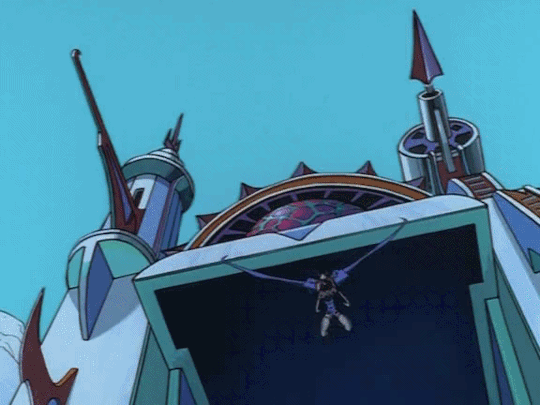
You see, Peter Chung is one of the few people to have the experience of directing both anime and western animation. The insights this gave him, related once upon a time on the anipages forums, were one of the seeds of what would become the ‘sakuga fandom’.
But let’s start at the beginning. Here’s a picture of Chung via imdb…

He was born in Seoul in 1961, the son of a guy in the foreign service, which meant his childhood was spent travelling all over the world (Wikipedia lists Seoul, London, Nairobi, Washington, D.C., New York and Tunis). Eventually they settled down to migrate to the USA, in Virginia. I’m not exactly sure when Chung got the animation bug, but it was early enough to send him to CalArts, where he attended their experimental animation program.
At age 18, he graduated CalArts joined the animation industry, working for the Spanish painter Salvador Bru. You can see some of Bru’s abstract paintings here; I haven’t been able to track down any of his work in animation. In any case, within a year Chung landed at Hanna-Barbera, working on character design, and also working with Ralph Bakshi [Animation Night 63] on layouts for his barbarian movie Fire and Ice (1983).
At this point he apparently got scouted by Didney for feature development, although which features he may have developed is not entirely clear. He also has layout and art direction credits for a couple of franchise works from this mid-80s period, such as The Transformers (1984, animation outsourced to Toei) and Teenage Mutant Ninja Turtles (1987, animated at an American studio then called Murakami-Wolf-Swenson, now Fred Wolf Films), and some less well remembered ones such as C.O.P.S., a bizarre animated spinoff of a reality show following cops on the job, and Ring Raiders, a toyline-driven show promoting toy aeroplanes.

Chung’s major break came, so far as I can tell, when he designed the characters for the inaugral Nickoledeon show Rugrats (see Animation Night 31 when we watched the Hanukkah episode), in which a group of children play in elaborate fantasy worlds. The show was a huge hit, although it was still a few years until Chung got the opportunity to create something purely according to his vision in Aeon Flux. In the intervening period he got to work on the post-apocalyptic superhero show Phantom 2040 (1994), once again on character design.
Then came Liquid Television, and Aeon Flux. Aeon Flux stood out amidst Liquid Television because its animation could easily have belonged a mainstream show… if it wasn’t horny philosophical science fiction, heavy on ambiguity. But by the same token, it’s specificity won a lot of die-hard fans (like me).
Since there are a number of interviews out there, let’s get some of Chung’s own words on what went into it…
O: You tend to broadly exaggerate your characters’ physical characteristics, especially their height and their musculature—is there any particular symbolic or aesthetic reason?
PC: That’s a hard thing for an artist to try to analyze. I could kind of try to pick it apart, but the simple truth is, that’s the way I draw. I mean, I can tell you about my influences—my favorite artist is Egon Schiele, the German Expressionist. If you look at his drawings, they’re very economical, very expressive. The first time I saw them, I thought they were perfect for animation. So I did make a conscious effort to try and adapt that approach to drawing. The other thing is… I was going for a style, when I was doing Aeon Flux, that was much more dependent on expressive drawing as opposed to lots of surface detail. In Japanese productions, they like to put a lot of highlights and shadows on things, to make things look very rendered. Each drawing has to stand out individually as an illustration. Having been trained in American animation, I wanted to have characters that were very realistic, but not so loaded with detail that they were going to be hard to move.
O: Your characters, both in Aeon Flux and in Reign, tend to dress in a way that’s half formalized costume, half fetish gear. They often don’t wear much, and what they wear is elaborate and stylized. What are your fashion influences?
PC: Well, I struggled a lot, when I was doing Aeon Flux, with how far to push the costumes, and how realistic to make them. I think a lot of illustrators realize—and you see this a lot in American comics as well—that if you draw costumes realistically, it’s very difficult. You end up spending all your time trying to create believable drapery. So the tendency is to draw skin-tight costumes that mold around the body. This allows you to use the body more. You see this with classical sculpture, and dancers. You try to use the expressive qualities of the human body more—that’s why sculptors prefer to work with nudes, as opposed to trying to make the clothing look accurate. Otherwise you end up concentrating on the clothing and not the person. The same is true with animation—I think of my animated characters as dancers. I want to be able to use body language as much as possible.
Chung’s comments here are interesting, in that his talk of forgoing highlights reminds me of the kagenashi approach taken by Mamoru Hosoda - in both cases, putting less complexity in the static drawings to allow for more motion, but still strongly influenced by the more solid drawing style of anime instead of the more 2D graphical approach of most American TV animation. Chung’s style of lanky anatomy with exaggerated bumps and details is uinstantly recognisable; only Robert Valley, directly inspired by him, is all that similar within animation.
What about Egon Schiele? Let me show you some of his paintings…
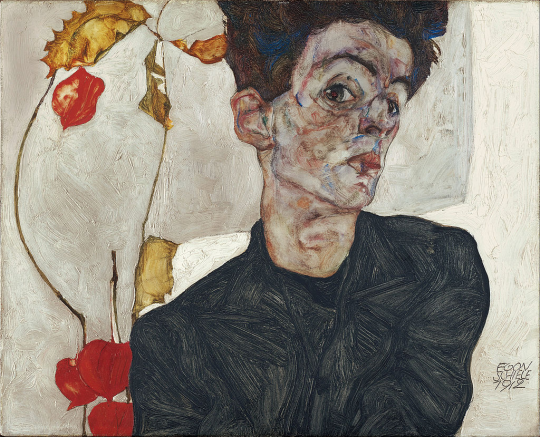
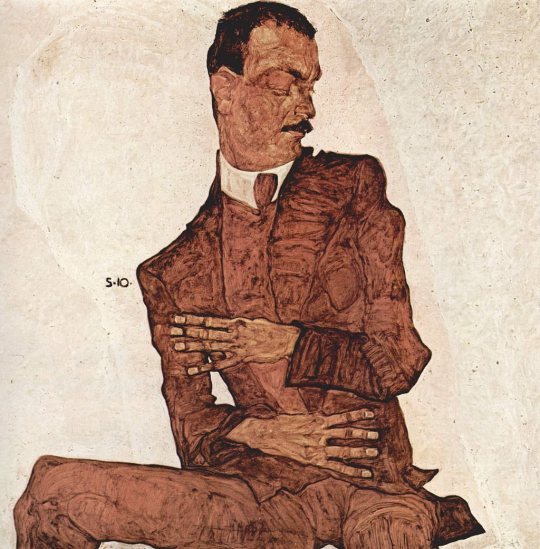
…you can probably see how he influenced Chung! (Expressionism if you’re wondering was a pre-first world war Modernist art movement which responded to naturalism and positivism by emphasising the personal, subjective emotional experience of the world. Thanks, Wikipedia!)
Alongside Schiele the German expressionist, Chung cites a whole lot of influences; lemme pick out some of the ones we’ve talked about on here…
I don’t consciously model my style or techniques on any particular body of work. I try as much as possible to draw from personal experience and observation. I’m inspired by the work of other artists, mostly because they show me how good it’s possible to be at practicing one’s craft. They would include, in no special order:
David Lynch, Stanley Kubrick, Orson Welles, Alfred Hitchcock, Federico Fellini, Alexandro Jodorowsky [Toku Tuesday 27], Michelangelo Antonioni, Alain Resnais, Jean Cocteau, Allain Robbe-Grillet, Seijun Suzuki,
Osamu Dezaki [Animation Night 95], Yoshiaki Kawajiri [Animation Night 25, Animation Night 67], Yoshinori Kanada [Animation Night 62], Moebius [Animation Night 71], Kazuo Umezu [author of The Drifting Classroom, whose adaptation we watched on Toku Tuesday 19],
Egon Schiele, Horst Janssen, Frank Lloyd Wright, among others.
On comics, he’s pretty down on the state of the American industry, describing it as largely divided between heavy-handed narration where the illustrations feel gratuitous, and artistic flexes with weak story. He describes his aspiration to communicate the feelings of the characters visually, without being heavy-handed. So while I’m citing influences, lemme pull up Peter Chung’s favourite comics…
Here is a list of my personal favorite comics stories in no particular order. My choices are based as much on mastery of narrative form, as on originality of conception. Each of them appear to have been impelled by an inner vision; they are not comics inspired by other comics, but rather by dreams, obsessions, yearnings.
1. Baptism, Makoto-chan, Fourteen by Kazuo Umezu
2. Savannah by Sanpei Shirato
3. Mighty Atom, No-man, Phoenix by Osamu Tezuka
4. The New Gods by Jack Kirby
5. The Airtight Garage, Arzach by Moebius
6. The Incal Saga by Moebius and Jodorowsky
7. The Tower, The Hollow Earth Series by Schuiten and Peeters
8. The Jealous God, Envie de Chien by Cadelo
9. Be Free! by Tatsuya Egawa
10. Hard-Boiled by Geof Darrow and Frank Miller
I love Aeon Flux, but I’ve talked at length about it in the past, so let’s not spend too long on it here, since tonight the focus is on what came next!

In 1998-9, four years after Aeon Flux, Chung got his chance to work in anime - and not only work in anime but on a series co-directed by Rintaro (Animation Night 53, AN 62, AN 67).
So. Alexander Senki began life as a series of light novels by Hiroshi Aramata, a prolific and widely talented natural history researcher and novellist known otherwise for the occultist historical fantasy novel Teito Monogatari. Alexander Senki tell the story of Alexander the Great, but projected into a futuristic scifi setting.
For the animated version, Madhouse went for an international approach, and invited Chung to come in and design the characters and settings for a 13-episode TV anime, later compiled into a 90-minute film. Much of the animation was outsourced to the Korean studio DR Movie - one you’ll see frequently in the credits of recent anime, but I believe this was more novel at the time.
Chung commented on the experience in the above interview…
Peter Chung: There are many ways I could answer [what it’s like to put a particular stamp on a work he’s not directing], I suppose. In this particular case, it was different from a lot of other shows I’ve worked on as a designer. I’ve done a lot of work in the U.S. as a character designer, but in Japan, it’s much more of an auteur role, where they really want your individual style on a project. In the U.S., it’s much more collaborative. What was good about Reign was that they really liked the idea of things having an eccentric, personal style. And for me, that was great. A lot of that has to do, usually, in animation, with the ability of the animators to adapt to the drawing style of the designer, and they did a very good job, they tried very hard, to follow my original drawings. Whereas often, in American productions, they will try to simplify or adapt a designer’s drawings to what the animators can draw.
O: Do you prefer the auteur method over working collaboratively?
PC: Well, as a designer, I like having the freedom and the license to design the way I want. So for me, working with the Japanese is better, at least from a designer’s point of view. Now, working from the point of view of an animator, I think the animators had a lot of difficulty adapting to my style.
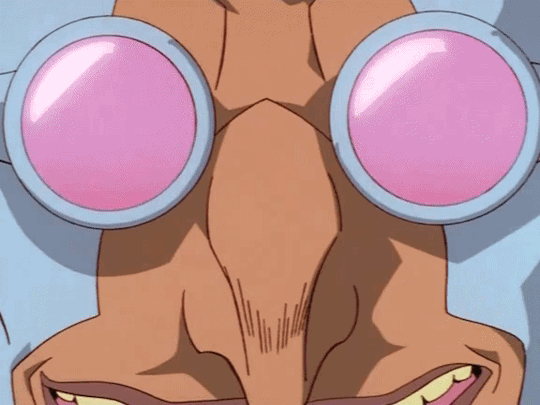
Animation-wise, Alexander Senki draws on the familiar techniques of Madhouse’s OVAs: limited animation and multiplane effects with moments of more complex animation. But Chung’s character and environment designs give it a particular flavour that makes it feel very different to most Madhouse works, really underlining the significance of a character designer to a project. The result, which takes a wander through the story of Alexander with a lot of philosophical musing was… polarising, but if you like Chung’s style, very appealing.
Since I cannot find the movie and it’s said to cut too much anyway, tonight my plan is to show 3-4 episodes of Alexander Senki - enough to give a taste. Because then the question is, what did Chung do next? He got a little more anime work, animating the credits to Party 7 - a live action comedy film which also Takeshi Koike on the map for its title sequence. Years later, Koike would make a spectacular tribute to Aeon Flux as an ad for the cancelled computer game…
And then we get the third entry in the ‘Aeon Fluxlike’ canon: Chung directed a segment of the Animatrix (Animation Night 6, long overdue for a rewrite though!). This was his first time working with significant CG - something he found a much more fluid process than traditional animation - and he was brimming with ideas, many of which ended up cut. Nevertheless, his entry is effective - pretty much just ‘what if Aeon Flux but the Matrix’, featuring a machine in a virtual environment designed to persuade it to defect. Chung says…
I mean, how many variations can you do on the story of someone suspecting that he’s living in a simulation, then waking up? I decided to take a radically different approach and view the world from the point of view of the machines. After all, a robot would be more susceptible to delusion than a human. Also, I wanted to show that the human mind is just as capable of creating a rich and seductive dream world as a computer is.
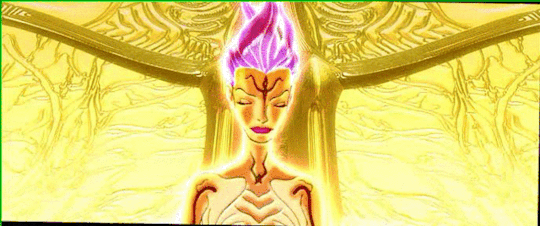
And after these three splendid creations, what did Chung do next? I think most people if asked would draw a blank, since he kind of fell off the radar. Aeon Flux was adapted into a feature-length movie, originally described as more of an art film by director Karyn Kusama, but it was taken out of her hands and heavily re-edited by the studio into a very generic sci-fi action movie. Chung had little involvement, and was heartbroken at the result:
With apologies to both Phil and Matt– who have publicly been effusive in their praise for the show– the movie is a travesty. I was unhappy when I read the script four years ago; seeing it projected larger than life in a crowded theatre made me feel helpless, humiliated and sad. (…) I know that the studio made a lot of cuts against the wishes of the writers and director. Most of the cuts concerned further development of the secondary characters. Since my main problems are with the portrayal of Aeon and Trevor, I doubt that I’d have liked the longer version much better. I didn’t when I read the script, and there are definitely some things I’m glad WERE cut– like Catherine’s pregnancy.
Maybe the makers didn’t understand the source material and thought they were being true to it; or they understood it, but didn’t think it would appeal to a wide enough audience and altered it to suit their presumed target. They claim to love the original version; yet they do not extend that faith to their audience. No, they will soften it for the public, which isn’t hip enough to appreciate the raw, pure, unadulterated source like they do. (…) Presuming to know what an audience wants to see and tailoring the product to fit is a method that sucks all the drive I’d have to ever create anything. It’s self-defeating disingenuous.
I’m not naive about the realities of making unconventional films in the arena of “mass entertainment”. It’s possible to make good unconventional films; it’s also very hard. In any case, if you’re going to risk failure, I say do it boldly, with conviction. The problem with the movie is its failure of nerve.
But Chung never seems to have gotten the chance to direct a wholly original project again. The remainder of his work is adaptations or franchise work, with various big productions reaching out to him to put a stylish auteur’s spin on their IP.
The first of these is a short film bridging the gaps between the two Riddick movies.
Riddick? Riddick is a series of sci-fi action movies featuring Vin Diesel as a space criminal. I admit, I haven’t seen them! They weren’t especially successful at the time, but became cult films, kind of present in nerd culture back in the 2000s… and kind of forgotten since. The first movie, Pitch Black, sees Riddick and co on a pilgrim ship which crash lands on an alien planet, where they have to survive. The second, The Chronicles of Riddick, opens with Riddick in hiding from bounty hunters. However did he get there? Telling us is Chung’s job!
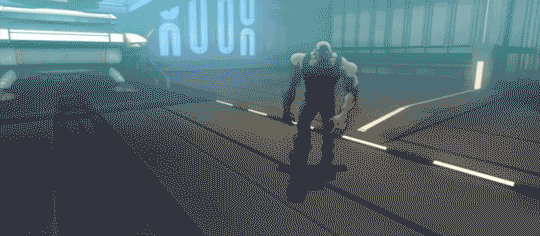
The Chronicles of Riddick: Dark Fury is a 35 minute short animated film, created at Universal Animation Studios, which specialise in direct-to-video films. This was the first time that Chung worked with Robert Valley, who would later become well known for his two films in Love Death and Robots (Animation Night 99); fortunately this being a franchise entry does not overwrite that distinctive Chung/Valley style, as seen in this distinctive fight scene animated along with Jorden Oliwa and Lee Hong. It’s full of cool distorted perspectives in the drawings and distinctive layouts.
Chung next appeared three years later, on another franchise spinoff, titled Revisioned: Tomb Raider, a compilation series bringing on a variety of comics artists and writers to put their own spin on the game. This was supposed to be the first in a whole series of Revisioned projects based on games, but in the end it seems only one was ever made. Chung provided designs and scripts for the first three episodes. They’re all available on Youtube, starting here…
Videogame spinoff animations have a curious quality: they tend to have exceptionally lavish animation with all the videogame $$$ coming in, but often feel quite limited by being a promotion - more on that when I talk about Trigger’s Cyberpunk anime sometime soon. I’ll be interested to see how Chung handles this one.
Another three year gap later in 2010 and Chung directs his only feature-length film, Firebreather, adapting an Image comic about teenagers battling kaiju in CG. It sounds honestly… pretty plain by Chung’s standards, without much to distinguish it in either animation or the energy of the story. It seems to have disappeared without really making a splash.
In 2012 comes another brief videogame promotion, this time for Diablo.
In both this and Tomb Raider, Chung seems to have moved away from his earlier unshaded style; this one especially skews much more to ‘Western animation taking after anime’. There is, sadly, very little of that Peter Chung flair to be seen, and honestly I wouldn’t have guessed he was involved: it’s just a string of fight scenes.
The next year, Chung started working as a teacher at USC School of Cinematic Arts, where he remained ever since. It’s not quite the end of his creative output in animation, since he did produce the titles for Victor and Valentino (2019), most likely because the author of the original comic book sees him as a huge influence and asked directly. And that’s it, basically! A complete slice through the creations of the Aeon Flux guy…
What’s the plan tonight? Essentially the cross-section of Peter Chung works presented above: we’ll watch a fair chunk of Alexander Senki, and then have a look at everything since. If people are in the mood we might even rewatch a bit of Aeon Flux!
So! Let’s go! Animation Night 125 will be starting shortly, at https://twitch.tv/canmom - hope to see ya there ^^
Comments